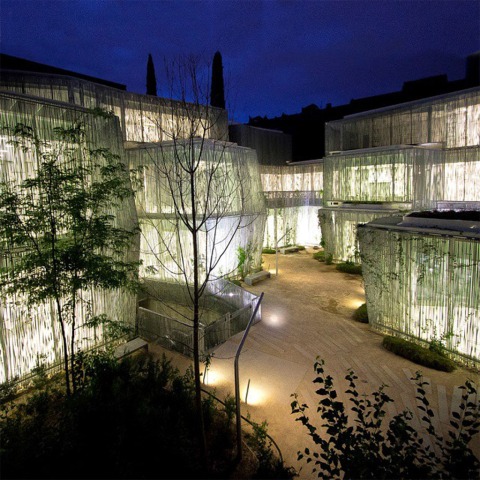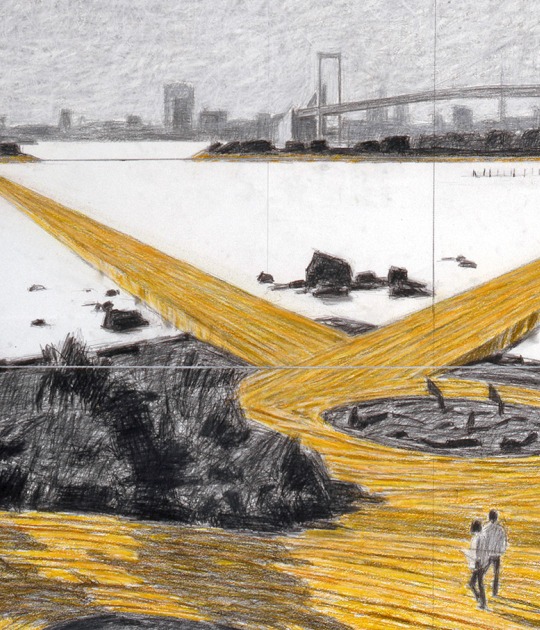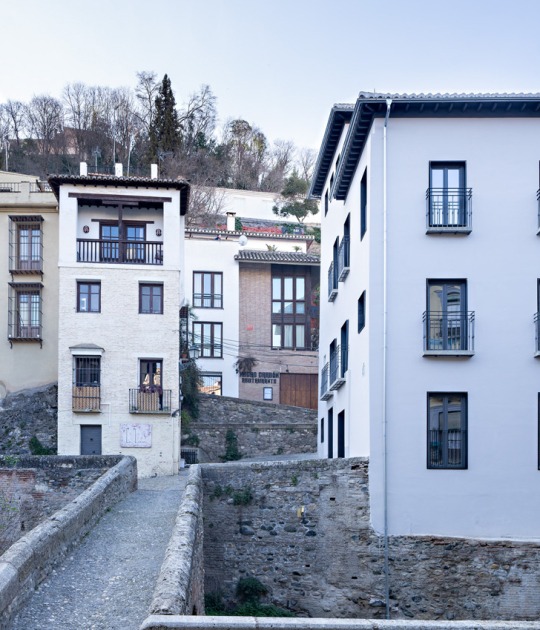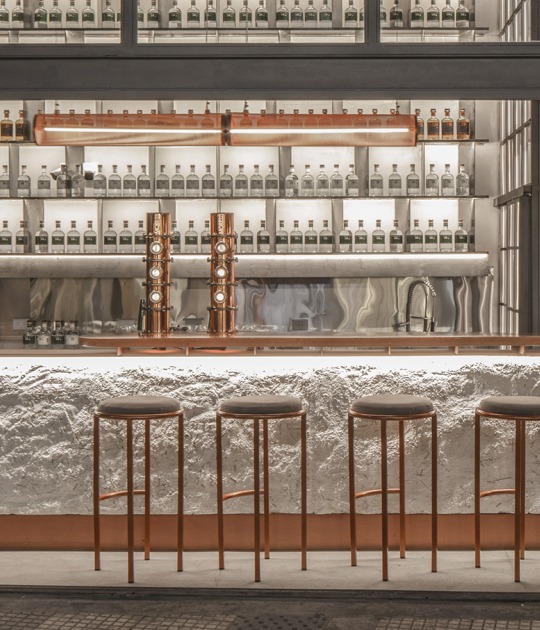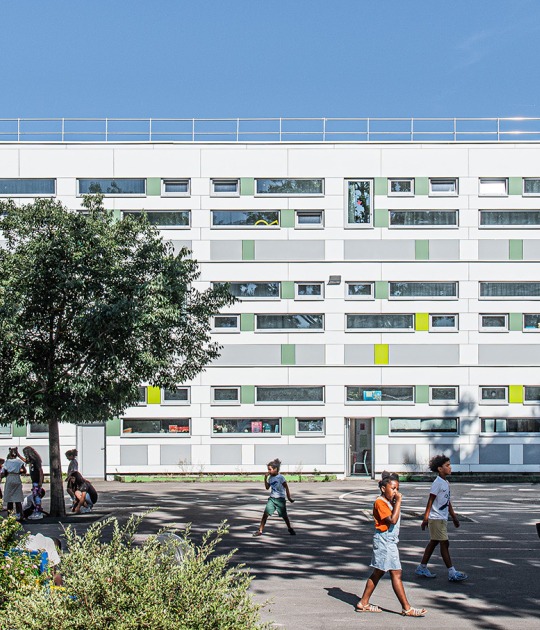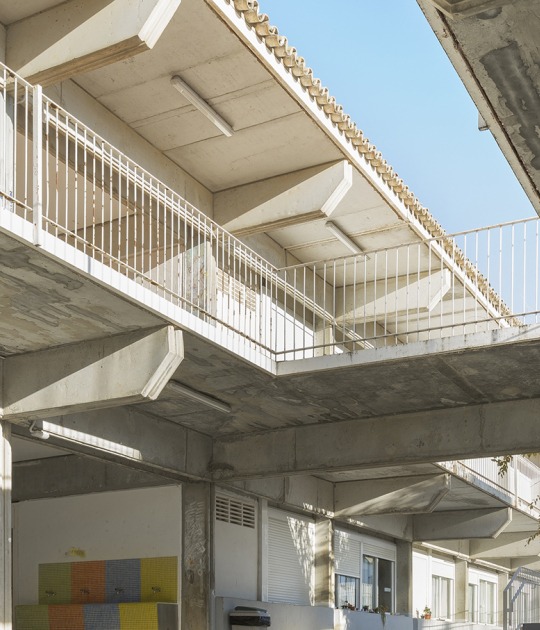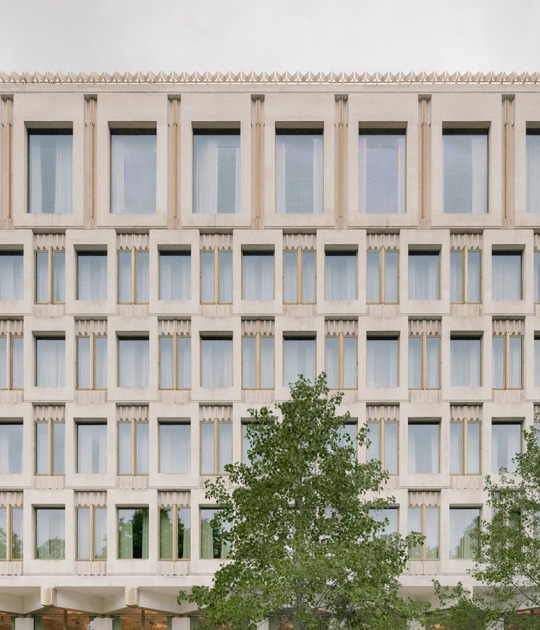The project chosen by Open House Madrid for its presentation is the project of the new headquarters for the Giner de los Ríos Foundation by Amid cero9, winners of the public competition for the rehabilitation and extension of the center of the Institución Libre de Enseñanza, which collects the ideas of its founder Francisco Giner. The project is focused on the recovery of the interior garden, which becomes the generator of all spaces, defining a system of rooms that redescribes spatially the place by the geometric play of incoming and outgoing volumes and by the composition of variable density metal façade.

PRESENTATION at FOUNDATION GINER DE LOS RÍOS.
The international festival Madrid Open House that will be held for the first time in Madrid the weekend of 26 and 27 September has chosen the work of awarded architects Amid.Cero 9, Cristina Diaz and Efren Garcia, for the official presentation of the festival.
The presentation will be attended by the founder of Open House World Wide, Victoria Thorton awarded the OBE by the Queen of England. Headquartered in London, Open House World Wide unites more than 30 cities including New York, Lisbon, Vienna, Melbourne ... that organize the Open House Festival and this year Madrid is joined to them. The festival allows to visit more than 100 buildings for free for a weekend.
In the words of its directors, Paloma Gomez and Pati, 'We have chosen Giner de los Ríos Foundation because it represents a responsible architecture, sensitive to the city and able to articulate a contemporary language that goes beyond mere functionality'.
Description of the project by AmidCero9.
Landscape
The set of actions taken in this solar tries to reflect the view of nature and landscape of Francisco Giner, who considered the landscape as a major educational tool and drove a multisensory and on equal terms approach to nature, based on tours and walks, and on the understanding of landscape as a cultural fact. The project aims to respond to these multiple aspects, that are now embodied in the inner garden surrounded by small pavilions.
Therefore, takes place a reversal of the objectives: the garden becomes the space to be determine and define by the remaining actions, while the new building expansion becomes only what configures it. To do this, we build a perimeter ring supported on the dividing walls that embraces and encompasses the existing buildings and the extension. The proposed spatial system is a series of rooms, some closed and others outside, which redescribe the existing garden: its sequence of spaces, the main road and its character. The relations between rooms produce deformations, swellings or compressions that break the garden into a multiplicity of distinct gardens.
Rooms
The outer envelope of this garden area is both a façade to the garden and a façade towards the classroom. A pleated or wrapped bars of an ambiguous scale determines the visual presence of the set of rooms to the public space and it works as an overlay filter for the classrooms that clarifies the views and serves as a transition between the natural elements outdoors and artificially constructed elements inside. The density of the elements and the ratio of glass and opaque parts is adjusted according to the exposure to sunlight to block solar radiation and to improve the energy efficiency of the façade. The material system follows the ideology of the institution in the use of durable and easy to maintain materials as well as austerity and simplification of encounters and details.
Deambulatory
The extension can be defined as a specialized dividing wall, a perimeter wall that is expanded and hosts rooms of different sizes that expand or constrict the space. The set of rooms, exhibition spaces, administrative spaces and the auditorium are connected by a system of horizontal and vertical connections.
Towards Martinez Campos Street, the spatial system is transformed, adapted and specialized: the perimeter piece rises to offer an appropriate scale that responds to its urban location and to the new public nature of the institution, and it is separated from the main building, defining the new access to the Foundation. On the ground floor, the projection of the footprint of the upper floors creats a landscape room dedicated to public acts, formed by different spaces that turn to the main scene. These rooms can be open or closed and can be devoted to temporary exhibitions ot to extend the auditorium so that it to has a variable size depending on the audience.
CREDITS. DATA SHEET.-
Architects.- AMID [cero9].- Cristina Díaz Moreno + Efrén García Grinda.
Collaborators.- Competition.- Ana Belén Franco, Iñigo González-Haba Plana, David Marsinyach, Jorge Martín Sainz de los Terreros. Basic project.- Jaime Bartolomé Yllera, Íñigo González-Haba Plana, Julia Gómez Candela, Jesús Isla, José Quintanar Iniesta, Jorge Saz Semolino, Rebeca Vallecillo.
Client.- Giner de los Ríos Fondation [Institución Libre de Enseñanza]. Restricted competition, 1st prize.
Dates.- Competition.- 2004. Basic project.- 2006-2007. Construction.- 2014.
Location.- Madrid, Spain.
